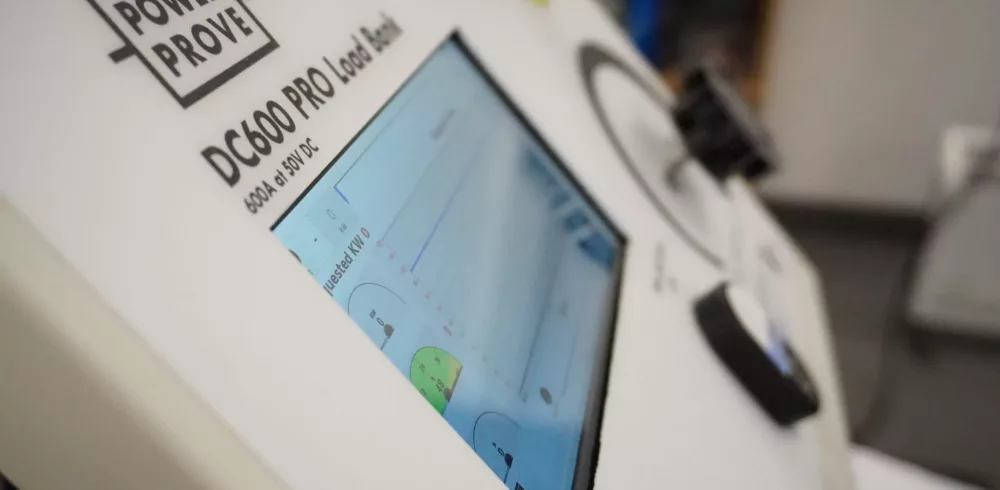As an essential piece of testing kit, load banks play a crucial role in ensuring safe, reliable power across many industries. While the market is well established with many applications remaining the same for years, changing demands and capabilities suggest there’s still room for growth in the sector. Here, Andrew Keith, division director of load bank manufacturer Power Prove, shares his insight into the future of load banks.
A greater focus on sustainability, an increase in digitalisation and a growing global population means that demand for electricity is exploding exponentially. In 2021, global electricity demand grew by almost six per cent, according to the International Energy Agency, and it’s showing no signs of slowing down. As a result, almost every organisation is increasing its reliance on a secure, constant power supply to keep operations flowing as expected.
Load bank applications are, in general, well defined, whether it’s testing a diesel generator that acts as a standby power supply, verifying a battery’s condition and confirming whether it needs replacing or acting as a ballast load to keep equipment at optimum operational performance. So, if applications remain the same, how are load bank expectations changing?
Portable, powerful
Portability has always been a requirement for load bank technicians. Being able to easily transport the equipment to the test site without complex logistics is a non-negotiable, but it can be complex since test locations can be challenging to reach, like the roof of a city centre building.
While load bank portability is a clearly advantageous trait, portability in the past come has always at the expense of load capacity. Taking the example of testing a generator on the roof of a building, this has traditionally left technicians with two options — use a crane to position a higher capacity load bank or install temporary cabling over the long distances needed to reach a convenient place for the load bank. Neither of these options are particularly simple, requiring advanced logistics and preparation.
However, portable load bank capacities are increasing, as are end-user expectations. Compact portable designs with higher load capacity allow technicians to easily keep a load bank in the back of the van for use as required without added complexity. With higher capacity in a compact size, technicians are able to use portable load banks for a greater range of applications, taking the headache out of vital generator testing for organisations and technicians alike.
Futureproofed design
Gone are the days where load banks have to resemble an outdated piece of kit with an aged design and user experience. Moving forward, there needs to be a greater focus on improving their usability to bring load bank technology in line with other products technicians use.
It can be something as simple as providing a digital user interface. Load banks with a digital control system are quicker to set up, making the testing process simpler for technicians. They don’t just allow users to select the power level, but also configure instant notifications if any issues or faults arise.
Power Prove’s DIGILOAD control system uses a small computer to record and store accurate test data for easy access as and when required. It’s the most powerful and flexible solution on the market, and is controllable via a local touch screen on the load bank itself, a rugged remote control or entirely remotely through an Ethernet connection. There is even the option of cloud connectivity.
Modernising traditional equipment with digital solutions enhances their capability and offers greater usability, bringing load banks in line with other electrical equipment. In addition, digital integration provides the basic infrastructure required to add additional capabilities in the future, as they be developed.
On time delivery
Despite the seeming stability of load banks and their applications, the increasing diversity of electricity generation and storage means that although the core function of a load bank is not new, the number of instances requiring a load bank is ever increasing.
While for some complex applications a custom load bank solution designed specifically for its application is necessary, in many cases an off-the-shelf solution will be more than fit for purpose, especially for those that need a product to be delivered quickly.
Power Prove’s standard load banks comprise of an AC and DC range to suit various applications within a faster delivery timeframe. The latest innovation in AC load banks — the AC100-CPT — is compact and lightweight with 100 kilowatts (kW) of load capacity. At just 31 kilograms (kg), the AC100-CPT offers exceptional capacity to weight ratio, making it ideal for high-capacity generator testing in hard-to-reach areas. The included transport case means service vans can easily be equipped with one of these units to get load banks to sites without pulling a trailer and even without using much of the valuable cargo space.
It’s not just diesel generator testing and maintenance that requires load banks, but there’s actually also an increasing number of DC applications, in part thanks to the electrification of the automotive market. For example, automotive DC load bank applications include testing the performance of EV charging points before installation, and also to ensure safe battery discharge when EV batteries reach their end of life.
For these increasing DC applications Power Prove’s DC600-PRO compact load bank provides 30 kW of capacity and precise control from 0.6A to 600A. Available with or without DIGILOAD, each of these off-the-shelf models offer advanced load bank capabilities in a much smaller delivery timeframe.
While load banks and their applications are fairly set in stone, it doesn’t mean that the technology needs to stagnate. Constant innovations in portability and usability will ensure the market continues to meet end user demands and adapt to new and expanding applications as they arise.
Power Prove is the load bank division of Cressall Resistors. Offering an enhanced standard range in addition to bespoke products Power Prove offers its load bank customers solutions for all requirements. To discuss an application with a member of the team, please get in touch.
Manufacturing & Engineering Magazine | The Home of Manufacturing Industry News














